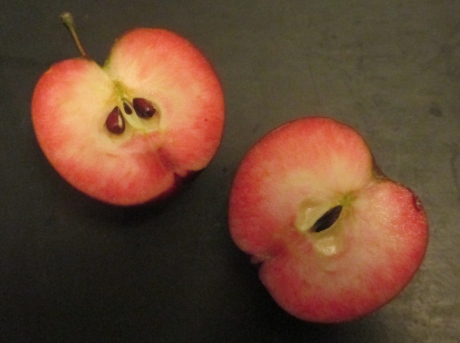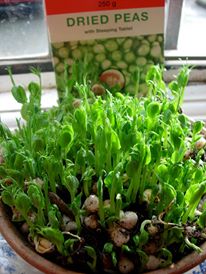
My lovely friend Vicky left this for me on my doorstep. She gardens very beautifully and gives gifts from her abundance. It’s very moving to receive these gifts and reminds me to be grateful that we all have created the space and time for gardening and cooking in our lives. Of all my friends, she is the true fan of my fermented beetroot bubbly, and I love making it for her. So we kind of have a barter situation going on, but I always feel i get the better deal. (Not that it’s about precision in any economic sense.)
Here were four Bantam eggs, some sorrel leaves, jerusalem artichokes and a hunk of a fresh turmeric rhizome. I could not resist presenting the photo on my Facebook as a Ready, Steady, Cook type invitation to ideas.
SNM: Some kind of egg drop soup with greens? That’s one of my favourites.
VW: Jerusalem artichoke and sorrel sauted with a little turmeric, and poached eggs on top??
VW: Parboiled, sliced and saute the j-artichokes till golden brown. Mix finely-diced turmeric and shredded sorrel with hard-boiled egg yolks and replace in halved egg whites. Serve in bed [with husband who was trying to make out with her].
CM: Is it ginger? Looks like galangal. Either way, I’d make some sort of Asianesque soup, but would need some thin chicken stock, too. Would have two eggs leftover and a humongous quantity of the root as well. What’s the green? Not arugula, not a brassica. Yes?
CM: Oh, sorrel! Tres bien. A nice, lemony Asian soup.
Me: Oh fun everyone! My thoughts would be– a really nice Richard Olney gratin of hard boiled eggs with sorrel, and would add some grated turmeric and serve the sunchokes on the side, roasted probably. Or, an artichoke (pureed)/ grated turmeric/ sorrel souffle, or frittata, or tortilla, with the artichokes slivered… But love the soup ideas too… Anyone else? x
Z: I would make an omelette and give the arties to someone else!
TH: I was going to say Tortilla.
Me again: I’ve long wanted to serve them at a dinner party and see if everyone could get comfortable with farting if everyone was doing it…. Actually I only rarely like them too, but thinking about it I think the sour sorrel and the fragrant turmeric could actually improve them… And they’re nice carmelized…
AH: I had them ONCE and the pain was unbearable! Everyone at the table was farting………and in pain!!
OT: Great way to eat J’lem artichokes: mash them up into mashed potatoes. It makes a lovely creamy mix.
CM: That sounds really nice. Maybe mix them up with mashed parsnips and/or rhutabaga [swedes] as well. (I do potato/parnsip/rhutabaga mash and it’s really good. Lot’s of butter, though.) I love artichokes, and have never had the issues mentioned. They do have a chemical effect of making water that you drink just after chewing an artichoke taste sweeter. Has anyone noticed this? I have. It seems that phenomenon might have a genetic component.
CM Jeruselem artichokes, or what are called “sunchokes” here [the US], are not artichokes but rather the bud of a plant that’s in the sunflower family. (I think I’m correct about this, but I’m too lazy to fact check.) Could they be the cause of the flatulence, rather than artichokes? Just wondering.
OT: I think it is technically considered a tuber. In any case it is a “root crop” like potatoes or parsnips, and yes, a kind of sunflower. They also are notorious as “fartichokes”.
LMcH: Omelette x
————————-
Well, in the end, sadly, I just put the sorrel in some soup, we used the eggs for breakfast, the J’artichokes were roasted for another meal, and the turmeric got grated into a lentil dish and we still have lots… Good uses, but would have been really fun to find them in one meal. Maybe next time. What would YOU have done with this particular set of foodstuffs, Dear Reader?
UPDATE 2 October 2013: Next time I have sunchokes (as I called them in my native land) I will excitedly put them in … Kimchi! This idea evolved from looking at the amazing tubers that are Szechuan Pickled Vegetable. And apparently fermenting them really reduces the flatlentia that seems to plague so many tummies and so many of us with juvenile humour find so funny…









